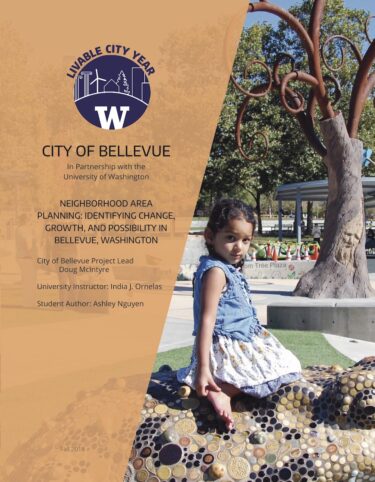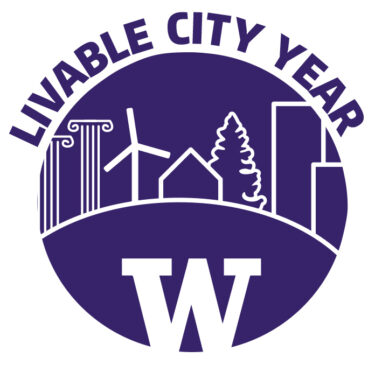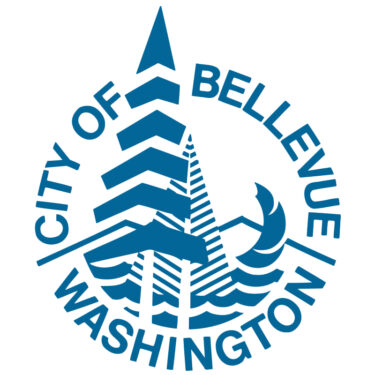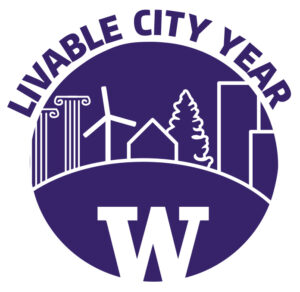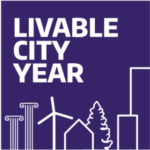Neighborhood Area Planning: Identifying Change, Growth, and Possibility in Bellevue, Washington
2018-2019 Livable City Year – Bellevue
City Project Leads: Doug McIntyre and Terry Cullen, Community Development
UW Instructor: India J. Ornelas, Health Services
Course: H SERV 580, Foundations of Health Behavior and Social Determinants of Health
Project description:
The student project team was tasked with producing a “High Quality Built and Natural Environment” project. Their project lead was Senior Planner Doug McIntyre, from the City’s Community Development department. Students used their skills to examine data and identify historic trends in four Bellevue neighborhoods, all chosen by the City based on their relevance to the work plan for Bellevue’s Great Neighborhoods initiative: Crossroads, Newport, Northeast Bellevue, and Northwest Bellevue.
The City is preparing to create neighborhood profiles for each of its 16 neighborhoods as part of its most recent Comprehensive Plan (approved in 2015). The initiative is still in its information-gathering stages. Students were able to illustrate specific changes, at the neighborhood level, using data from the 2000 United States Census, the 2016 American Community Survey (ACS), and other publicly available data. They also interviewed 12 community stakeholders to better understand Bellevue’s strengths and residents’ concerns. Overall, students observed the following trends within the four neighborhoods, which reflected changes occurring in Bellevue at large:
Demographics are shifting. Since the early aughts, people from all over the world have landed in Bellevue, increasing the city’s foreign-born population from 24.5% in 2000 to an estimated 38% in 2017, according to Census data. This is changing the way residents communicate with each other and with the City.
Median household income is on the rise. The median household income has increased by about 69% since 2000. Some neighborhoods have seen a significant increase in the number of people who make more than $200,000 annually, widening the income gap between the city’s affluent residents and those who live below the federal poverty line.
More people are renting in Bellevue. Since 2000, more residents have chosen to rent, possibly because of rising property values. However, costs to rent remain high. The average price of a two-bedroom apartment in Bellevue is $2,328. According to estimates from RentCafe, apartment rents range widely, from $1,912 in the Crossroads neighborhood to $3,015 in Northwest Bellevue.
Some neighborhoods are beginning to favor public transit, but a majority of residents still drive to work. In Crossroads, the number of people who use public transit to commute to work doubled from 11% in 2000 to 24% in 2016, according to Census data. Traffic and congestion is a concern for many residents, but overall, 63.8% of workers in Bellevue still drive alone during their commutes. A few projects, such as the construction of the East Link extension, may increase the use of public transit over the next decade.
The City will use some of the information gathered by students when it publishes updated Neighborhood Area Plans in the coming years. These plans will provide current and future Bellevue residents with snapshots of their neighborhoods as they identify priorities and help the City plan for the future.
Part of the 2018-2019 Livable City Year partnership between the University of Washington and the City of Bellevue.
See all Livable City Year projects in Bellevue that UW students and faculty worked on during the year-long partnership.
